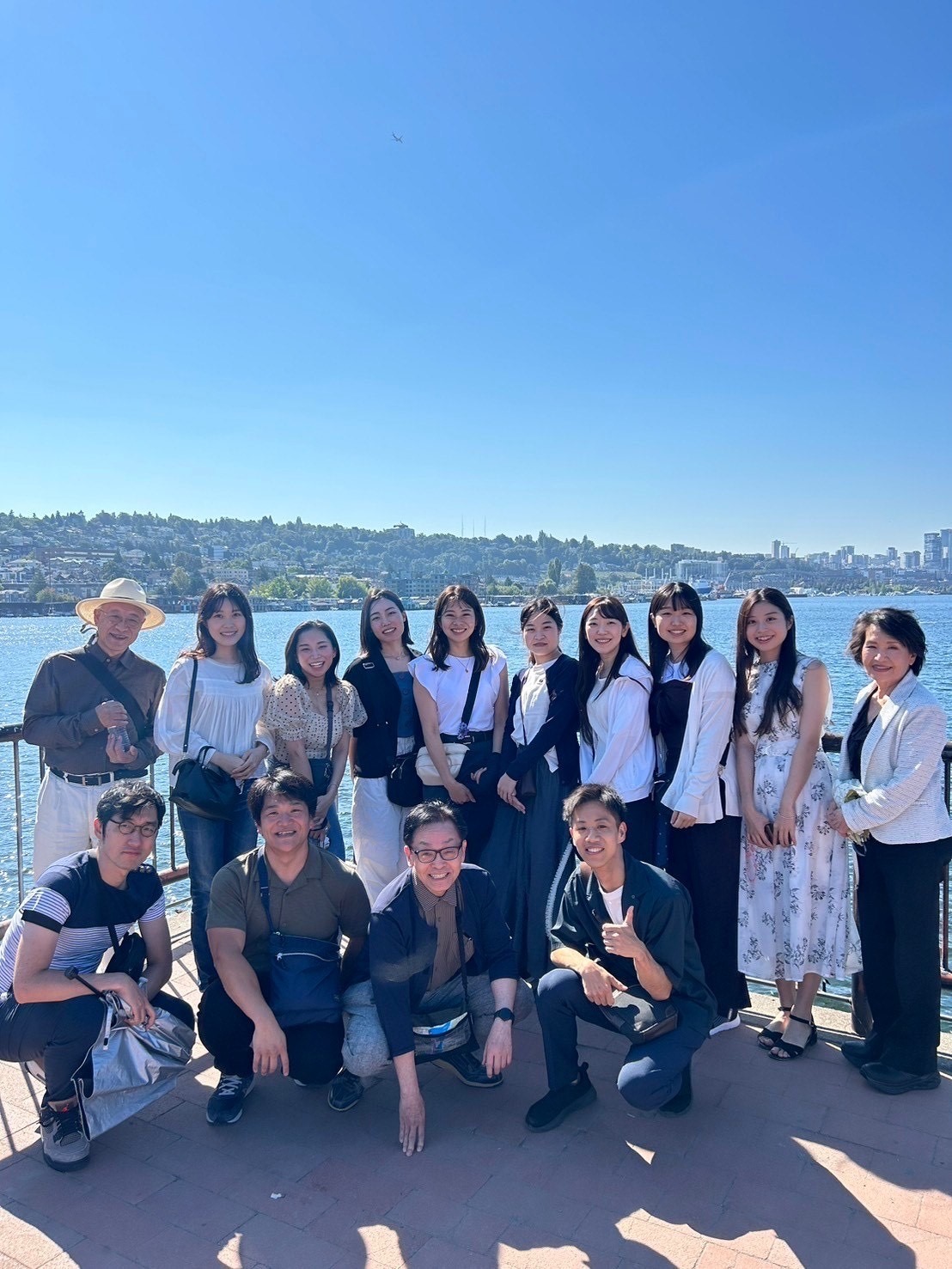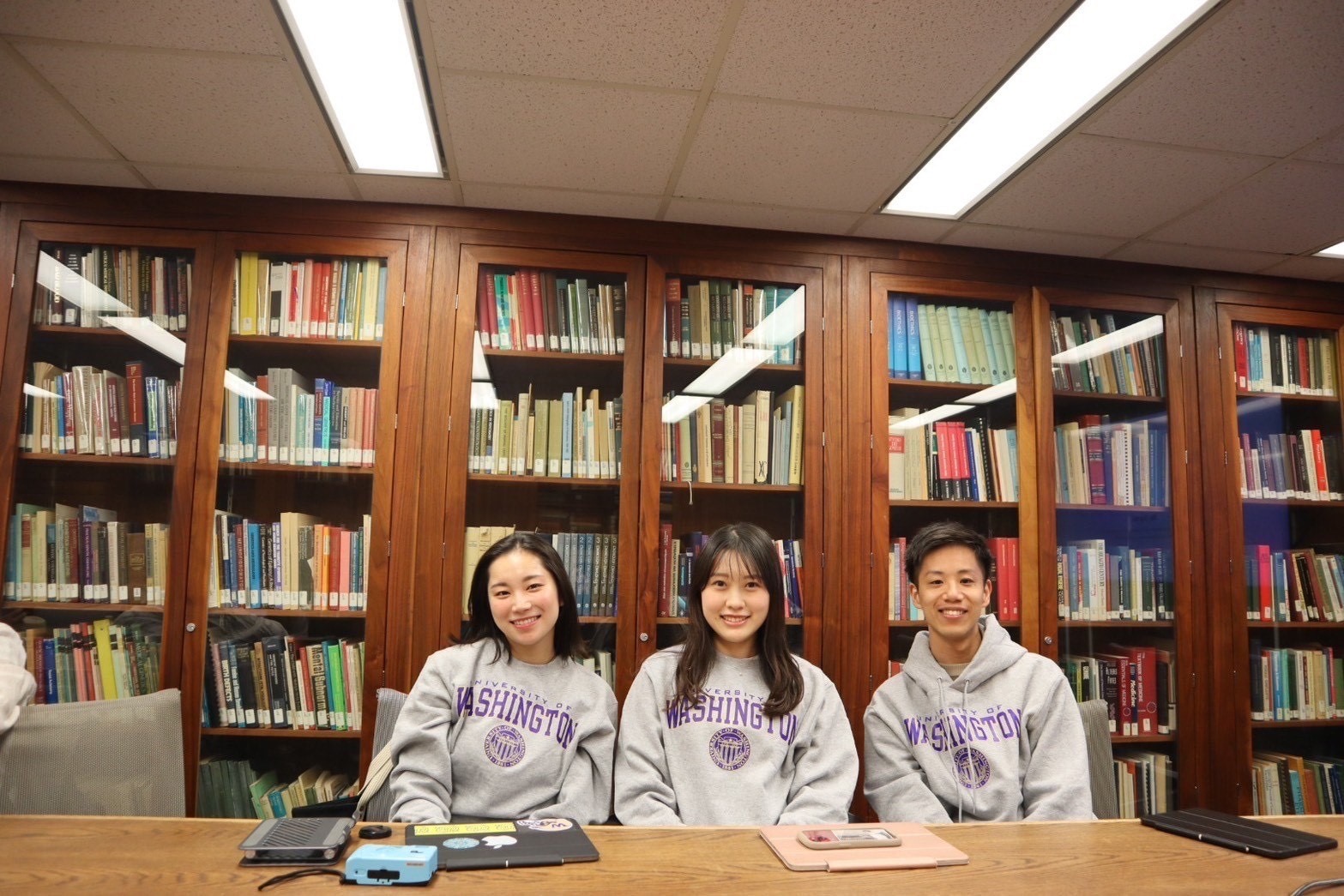International and Domestic exchange
Riko Takase (5th grade)
After completing training at the University of Washington
For one week from August 3rd to 10th, I participated in a training program to learn bioethics at the University of Washington School of Medicine in Seattle. I was attracted to the rare opportunity to attend lectures at a historic American university, interact with School of Medicine students, and tour the hospital, and I decided to participate because I wanted to learn more about bioethics, a field that is extremely important for doctors, through this training.
Every day of my week in Seattle was stimulating and an experience I will never forget. I would like to write about the lectures, facility tours, and experiences that made the biggest impression on me.
The first was the lecture on “the 4 box method” that I took at the University of Washington. In this lecture, I learned about the framework that is the basis for considering medical ethics. “The 4 box method” is a way of thinking used to organize medical ethics issues and provide better medical care to patients. It consists of four elements: Clinical Indication (medical facts including the patient’s condition and treatment method), Patient Preference, Quality of Life, and Other factors (money, family, culture, religion, etc.). By filling in these four items, doctors can evaluate the patient’s situation from multiple perspectives and derive the best choice for the patient. During the discussion time using examples, I found it particularly difficult to select a surrogate when the patient lacks the capacity to make decisions, and whether others can accurately judge the patient’s QOL. I also strongly recognized that factors such as medical costs, culture, and religion are particularly important in the United States, where there is no universal health insurance system and there is a diverse race and religion.
The second lecture was by Dr. Sairenji Tomoko, a Japanese family doctor in the United States. Family doctors in the United States are comprehensive primary care physicians who have knowledge in various fields, including not only internal medicine but also pediatrics, obstetrics and gynecology, psychiatry, and orthopedics, and provide a wide range of medical services regardless of the patient's age or gender. Family doctors also treat patients consistently from childhood to old age, and place importance on building long-term relationships of trust with patients and their families. I was impressed by the fact that in the United States, in order to deal with patients from diverse cultural backgrounds, it is necessary to provide medical care while understanding their culture and values. I felt that there is a lot we can learn from this comprehensive approach to treating patients in Japan.
The tours of Seattle Children's Hospital, Fred Hutch Cancer Center, and Harborview Medical Center were very meaningful and allowed me to learn the differences between hospitals in the United States and Japan.
I was surprised at the spacious lobby at Seattle Children's Hospital, with high ceilings and bright light streaming in through the large windows. It was a stylish and open space that you wouldn't expect in a hospital. The walls in the hospital were designed to resemble forests or the sea in each area, and there were pictures and objects of animals. The colorful and playful design was designed to ease the tension of children. In addition, the hospital had a playroom, school classrooms, and a chapel, and most of the patient rooms were private, so parents could stay with their children. I was impressed by the environment that was created to make children and their families comfortable. Here, we also received a lecture on pediatric palliative care and had a discussion using actual fictional cases. Palliative care is different from medical care that aims to cure, and aims to ease the pain of patients and improve their quality of life. In particular, palliative care for children places a great mental burden not only on the children themselves but also on their families, so I felt that it was necessary to have a system in place to support the entire family. During the discussion, we struggled a lot about how invasive procedures should be for patients with a short life expectancy. There is no clear answer to this question, but I realized that we as a medical team must always think about how we can provide the best support, paying close attention to the child's physical and mental suffering and taking into account the family's wishes.
When I visited the Fred Hutch Cancer Center, I was overwhelmed by the scale and expertise of the facility where cutting-edge cancer treatment and research are conducted. At the center, I received a lecture on immunotherapy. What was particularly impressive was how many lives have been saved and how the research on immune checkpoint inhibitors discovered by Dr. Honjo Tasuku has revolutionized cancer treatment. Coming to America and hearing about his achievements, I was reminded of how amazing a discovery Dr. Honjo made and how much of an impact he had on the world, and I felt proud as a fellow Japanese.
Harborview Medical Center is a hospital at the forefront of emergency medical care. Its philosophy is to accept all kinds of patients, and because patients come from a variety of backgrounds, the medical staff is not only familiar with different languages and cultures, but is also considerate of the social background and economic situation of the patients. In addition, the hospital is also famous for its trauma center, so trauma patients are transported by helicopter not only from Washington State but also from the surrounding areas.
In addition to the lectures and tours of the facilities, I had many other valuable experiences. I visited the first Starbucks store, Pike Place Market, Amazon's headquarters, and other famous spots in Seattle, saw the beautiful night view on a dinner cruise, and had a meal with Dr. King and other professors who had helped me, as well as medical students from the University of Washington, at a wonderful restaurant at the end of the farewell party. Every moment was truly fun and I will never forget it.
Lastly, I would like to express my sincere gratitude to Mr. Yamanishi of Hirakata Rehabilitation School for giving me this wonderful opportunity, as well as to Mr. Seki, Mr. Hattori, Mr. Makimura, Mr. Kimura, Mr. Yamanishi, Mr. Oishi, Mr. Masaki, Mr. Yoko who interpreted for the lectures, Yoshiko and Ms. Yada of JTB, Mr. King and other teachers at the University of Washington, and everyone involved in this program. I am also very grateful to my fellow students and everyone at Teikyo University who spent the best week with me. Thank you so much.

